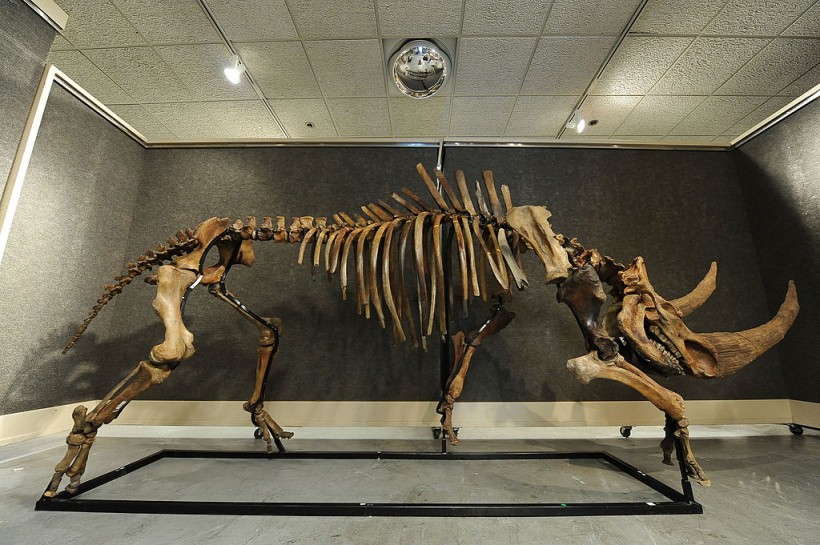The remote and icy north of Siberia's Yakutia Republic has become famous for the discovery of Ice Age mammal remains within its thick permafrost deposits.
Completely buried carcasses that have shrunken and dried up to a natural mummified state have been discovered in some cases.
Such discoveries can assist experts in answering major questions about extinct species, the conditions under which they lived, and their relationships to other species, both living and extinct.
Here are 5 of the most popular prehistoric creatures discovered while preserved in the frozen depths of Siberia.
Woolly Rhino baby
 (Photo : ROBYN BECK/AFP via Getty Images)
(Photo : ROBYN BECK/AFP via Getty Images)

This woolly rhino baby, named Sasha by the man who discovered it, was the first of its kind to be discovered.
It's unclear whether it's male or female, but the size of its horns suggests it had been weaned by the time it died. It roamed the vast steppe, a dry, cold region stretching from Spain to Siberia.
Lion or lynx
The golden fur of the cub is matted with mud but otherwise undamaged. Her teeth, skin, soft tissue, and organs are all mummified but undamaged.
Her claws are still sharp enough to prick the finger of one of the scientists studying this remarkable - and unprecedented - permafrost-preserved specimen after 28,000 years.
The Siberian Simba, nicknamed Sparta, was one of two baby cave lions discovered in 2017 and 2018 by mammoth tusk hunters on the banks of the Semyuelyakh River in Russia's Far East by mammoth tusk hunters.
Also Read: 6 Animals That Can Freeze Themselves and Come Back to Life!
Frozen lark
The bird was discovered buried and frozen in permafrost near the village of Belaya Gora in north-eastern Siberia by local fossil ivory hunters, who then passed it on to a team of experts for testing, including Nicolas Dussex and Love Dalén from the Swedish Museum of Natural History.
According to a paper published Friday in the journal Communications Biology, radiocarbon dating revealed the bird lived approximately 46,000 years ago, and genetic analysis identified it as a horned lark (Eremophila alpestris).
According to Dalén, research has revealed that the bird may be an ancestor of two subspecies of larks that are still alive today, one in northern Russia and the other on the Mongolian steppe.
Cave Bear
The perfectly preserved remains of an Ice Age cave bear have been discovered in the Russian Arctic, marking the first time the species' soft tissues have been discovered intact.
Reindeer herders on the Lyakhovsky Islands, part of the New Siberian islands archipelago in Russia's Far North, made the incredible discovery.
The cave bear (Ursus spelaeus) is a prehistoric species or subspecies that lived in Eurasia during the Middle and Late Pleistocene periods and went extinct around 15,000 years ago, according to the team. According to preliminary estimates, the bear is between 22,000 and 39,500 years old.
Frozen foal
A two-month-old horse (opens in new tab) that died between 30,000 and 40,000 years ago made its way to a Siberian crater 100 meters (328 feet) below the surface.
The young horse stood nearly 1 m (3 feet) tall in life, and its hooves are still intact, as are tiny hairs visible inside the foal's nostrils.
Related article: Arizona Man Accused of Freezing Almost 200 Animals Inside a Garage Freezer
© 2024 NatureWorldNews.com All rights reserved. Do not reproduce without permission.





